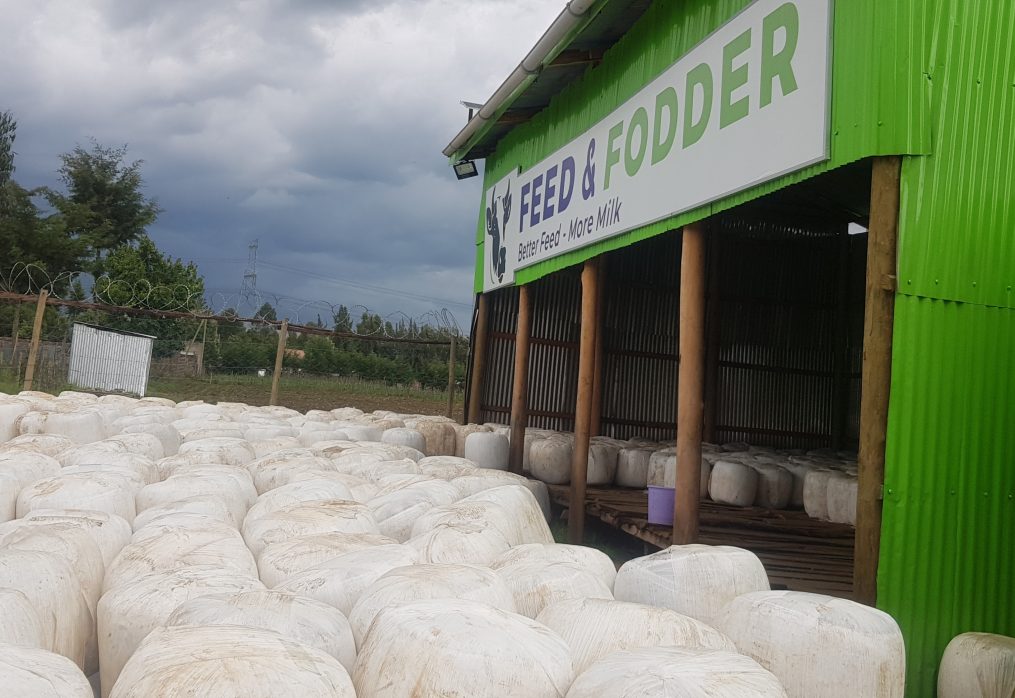Exploring the Composition and Nutrient Content of Maize Silage: A Guide for Dairy Farmers in Kenya
As dairy farmers in Kenya strive to maximize milk production and maintain the health of their cows, it is crucial to understand the composition and nutrient content of the forages they feed their animals. Maize silage, derived from the entire maize plant, has gained recognition as a valuable forage option due to its high nutritional value. In this guide, we will delve into the composition and nutrient content of maize silage, providing dairy farmers in Kenya with valuable insights into the benefits it offers for their herds.
- Maize Silage Composition:
Maize silage is obtained by harvesting the entire maize plant, including the stalk, leaves, and grain, at the optimal stage of maturity. This complete plant utilization contributes to the composition of maize silage, providing a broad range of nutrients necessary for cow health and milk production.
a) Dry Matter Content: The dry matter content of maize silage refers to the portion of the plant remaining after removing moisture. It plays a crucial role in determining nutrient concentrations and the overall nutritional value of the silage. On average, maize silage contains approximately 30-40% dry matter, which makes it a highly concentrated feed option.
b) Energy Content: Maize silage is known for its high energy content, making it a valuable energy source for dairy cows. The energy in maize silage is primarily derived from the plant’s starch content, found mainly in the grain. The grain-to-stalk ratio influences the energy content of maize silage, with higher grain content contributing to increased energy levels.
c) Protein Content: Maize silage is also a source of protein, crucial for supporting milk production and cow health. The protein content in maize silage typically ranges from 7% to 10%, depending on factors such as maize variety, maturity stage, and fertilization practices. While maize silage is not as protein-dense as some other forage options, it still provides a valuable source of amino acids for dairy cows.
d) Fiber Content: The fiber content in maize silage contributes to rumen function and overall cow health. Maize plants contain two types of fiber: neutral detergent fiber (NDF) and acid detergent fiber (ADF). NDF provides the cow with structural material, while ADF represents the less digestible fraction. The fiber content in maize silage typically ranges from 35% to 45%, depending on factors such as plant maturity and ensiling practices.
- Nutrient Content of Maize Silage:
Maize silage provides a range of essential nutrients necessary for dairy cows to maintain optimal health and productivity. Understanding the nutrient composition of maize silage is crucial for formulating balanced diets and meeting the nutritional requirements of the herd.
a) Energy: The energy content in maize silage is primarily derived from the starch content of the grain. The energy value of maize silage is measured in terms of metabolizable energy (ME) or net energy (NE) and is typically expressed in megajoules (MJ) per kilogram of dry matter. On average, maize silage provides around 9 to 11 MJ of ME per kilogram of dry matter.
b) Protein: While maize silage is not particularly high in protein compared to other forages, it still contributes a significant amount to the cow’s protein needs. The protein content in maize silage ranges from 7% to 10% of dry matter. It is important to note that protein quality, specifically the amino acid profile, should be considered when formulating balanced diets for dairy cows.
c) Minerals and Vitamins: Maize silage contains a variety of essential minerals and vitamins necessary for cow health and production. These include calcium, phosphorus, potassium, magnesium, zinc, copper, and vitamins such as vitamin A, vitamin E, and some B vitamins. While the exact concentrations may vary depending on factors such as soil fertility and plant genetics, maize silage can contribute significantly to meeting the cow’s micronutrient requirements.
d) Fiber: The fiber content in maize silage is primarily composed of NDF and ADF. Fiber is important for rumen function, promoting optimal digestion and rumen health. The NDF content provides structural material for the cow’s rumen microbes to ferment, while the ADF represents the less digestible fraction. The specific levels of NDF and ADF can vary depending on factors such as plant maturity and ensiling practices.
- Factors Affecting Maize Silage Composition:
Several factors can influence the composition and nutrient content of maize silage. Understanding these factors allows dairy farmers to make informed decisions when growing and ensiling maize for silage production.
a) Maize Variety Selection: Different maize varieties can have varying compositions and nutrient profiles. It is important for dairy farmers to select maize varieties that are well-suited for silage production, considering factors such as grain-to-stalk ratio, maturity, and overall nutritional value.
b) Maturity Stage: The stage of maturity at which maize is harvested significantly impacts its nutrient content. As the plant matures, the grain becomes more developed, increasing the starch and energy content. However, delaying harvest too long can lead to a decline in fiber digestibility. Finding the optimal balance between grain development and fiber digestibility is crucial for maximizing the nutritional value of maize silage.
c) Ensiling Practices: Proper ensiling practices are essential for preserving the nutritional quality of maize silage. Factors such as chopping length, packing density, and ensiling additives can influence fermentation, nutrient retention, and palatability. Attention to detail during the ensiling process can help minimize nutrient losses and ensure high-quality maize silage.
Maize silage is a valuable forage option for dairy farmers in Kenya, providing a concentrated source of energy, protein, fiber, and essential nutrients. Understanding the composition and nutrient content of maize silage allows farmers to make informed decisions when formulating balanced diets for their cows. Factors such as maize variety selection, maturity stage, and ensiling practices play crucial roles in determining the nutritional value of maize silage. By optimizing these factors and incorporating maize silage into their feeding programs, dairy farmers can enhance milk production, improve cow health, and ensure the long-term success of their operations.
